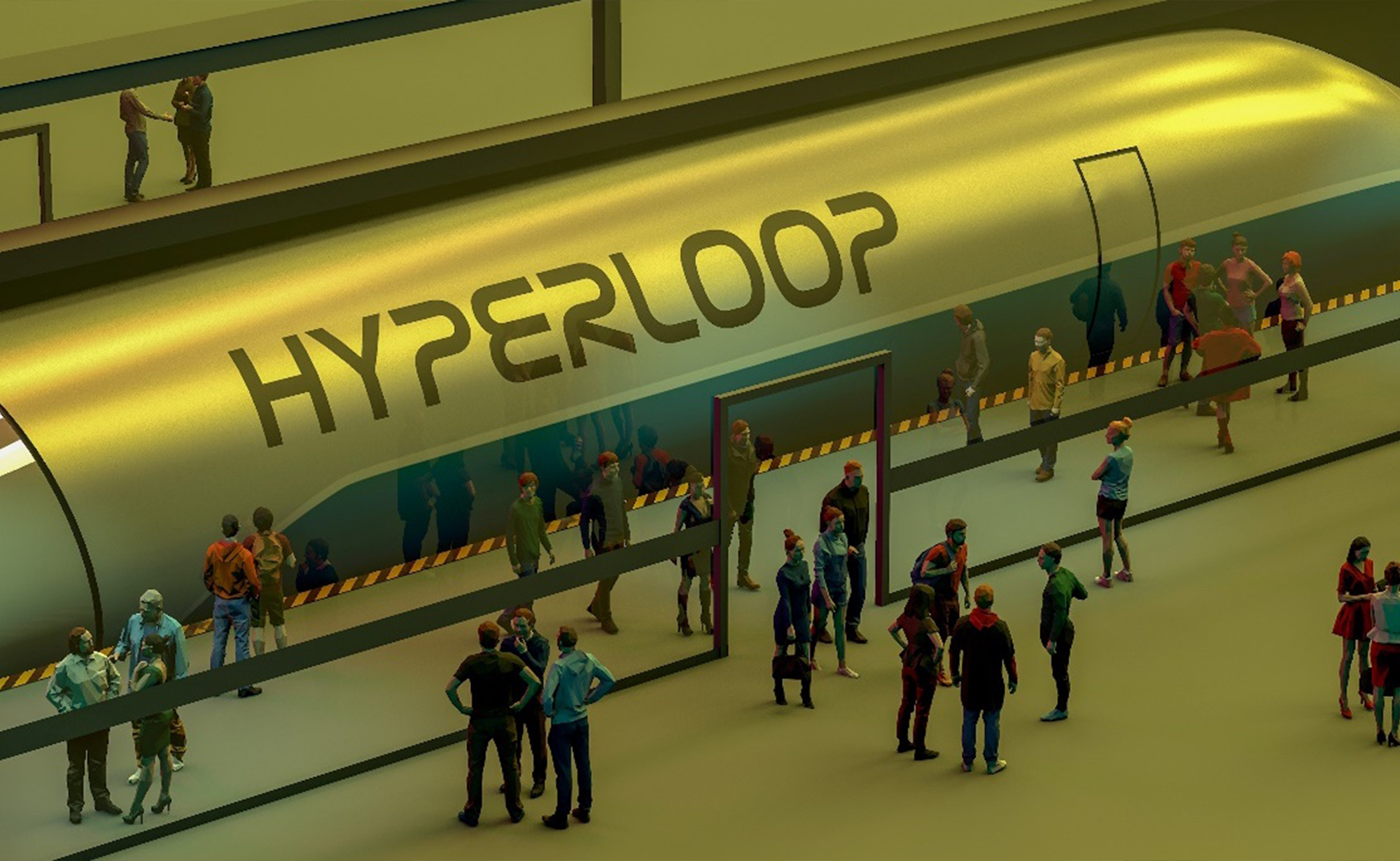Hyperloop: The Future of High-Speed Travel
Imagine traveling at speeds exceeding 700 miles per hour in a near-vacuum tube, drastically reducing travel time between major cities. This is not a scene from a science fiction movie but the promise of the Hyperloop, a revolutionary mode of high-speed transportation conceptualized by Elon Musk in 2013. The Hyperloop aims to transform the way we commute, offering a sustainable and efficient alternative to traditional transportation methods.

The Concept and Technology Behind Hyperloop
The Hyperloop system leverages cutting-edge technology to achieve its remarkable speeds. The core idea involves passenger pods traveling through low-pressure tubes, significantly reducing air resistance. These pods are propelled by linear induction motors and air compressors, allowing them to glide effortlessly at high velocities. The near-vacuum environment minimizes friction, further enhancing speed and energy efficiency.
One of the critical components is the use of magnetic levitation (maglev) technology. By employing powerful magnets, the pods are suspended above the tracks, eliminating contact and thereby reducing wear and tear. This not only ensures a smoother ride but also lowers maintenance costs compared to conventional rail systems.
The integration of renewable energy sources such as solar panels along the tube infrastructure further underscores the sustainability aspect of Hyperloop. According to research from Tesla and SpaceX, this system could potentially generate more energy than it consumes, making it an environmentally friendly option for future travel (Tesla.com).
Economic and Environmental Impact
The economic implications of the Hyperloop are profound. By significantly cutting travel times, it can boost productivity and connectivity between urban centers. Imagine commuting from Los Angeles to San Francisco in under 30 minutes, a journey that currently takes around six hours by car or one hour by plane with added time for check-ins and security.
Furthermore, the construction and operation of Hyperloop systems could create thousands of jobs across various sectors, from engineering to manufacturing to maintenance. The potential for economic growth is immense, as regions connected by Hyperloop could see increased investment and development.
From an environmental perspective, Hyperloop offers a greener alternative to air and road travel. Reduced carbon emissions due to its reliance on renewable energy sources align with global efforts to combat climate change. According to a study published by the International Journal of Transportation Science and Technology, implementing Hyperloop could reduce greenhouse gas emissions by up to 90% compared to current transportation modes (ScienceDirect.com).
Current Developments and Challenges
Several companies are actively working on bringing Hyperloop technology to life. Notable among them are Virgin Hyperloop and Elon Musk’s Boring Company. Virgin Hyperloop has conducted successful test runs, including a passenger trial in November 2020 where the pod reached speeds of over 100 miles per hour in just 6.25 seconds.
Despite these advancements, numerous challenges remain. Safety concerns are paramount; ensuring passenger safety at such high speeds requires rigorous testing and robust engineering solutions. Regulatory hurdles also pose significant barriers, as existing infrastructure regulations need substantial modifications to accommodate this new mode of transport.
Another challenge is the high initial cost of building the Hyperloop infrastructure. Estimates suggest that constructing a route like Los Angeles to San Francisco could cost between $6 billion and $7.5 billion (Bloomberg.com). While long-term benefits may outweigh these costs, securing initial investment remains a critical hurdle.
Comparison with Other High-Speed Transit Systems
| Feature | Hyperloop | High-Speed Rail | Air Travel |
|---|---|---|---|
| Speed | Up to 760 mph | 200-300 mph | 500-600 mph |
| Energy Efficiency | High (renewable energy) | Moderate (electricity) | Low (fossil fuels) |
| Environmental Impact | Low (minimal emissions) | Moderate (dependent on energy source) | High (significant emissions) |
| Cost Efficiency | High (long-term savings) | Moderate (expensive infrastructure) | Low (high operational costs) |
| Travel Time Reduction | Dramatic (minutes for long distances) | Significant (hours saved) | Moderate (time saved mostly in-flight) |
The Future Prospects of Hyperloop
The future of Hyperloop looks promising yet uncertain. With ongoing research and development, it is plausible that we will see fully operational routes within the next decade. Governments worldwide are showing interest in this technology, seeing it as a solution for overcrowded highways and congested airports.
Pilot projects are already underway in countries like India, where Virgin Hyperloop has signed agreements with local authorities to explore potential routes. Similarly, European nations are exploring cross-border Hyperloop networks that could redefine regional travel dynamics.
The Role of Government and Private Sector Collaboration
The successful implementation of Hyperloop will require collaboration between governments and private companies. Public-private partnerships can provide the necessary funding and regulatory support while leveraging private sector innovation and efficiency.
- Funding: Governments can offer subsidies or tax incentives to attract private investment.
- Regulation: Streamlining regulations can expedite project approvals and construction timelines.
- Innovation: Private companies bring technological expertise essential for overcoming engineering challenges.
This collaborative approach can accelerate the deployment of Hyperloop systems globally, bringing us closer to realizing this futuristic vision.
The journey towards making Hyperloop a reality is marked by both excitement and challenges. Its potential benefits in terms of speed, sustainability, and economic impact make it an attractive proposition for future transportation needs.
If these hurdles can be successfully navigated, we may soon witness a transportation revolution that could reshape our world just as significantly as the advent of railways or air travel did in their times.